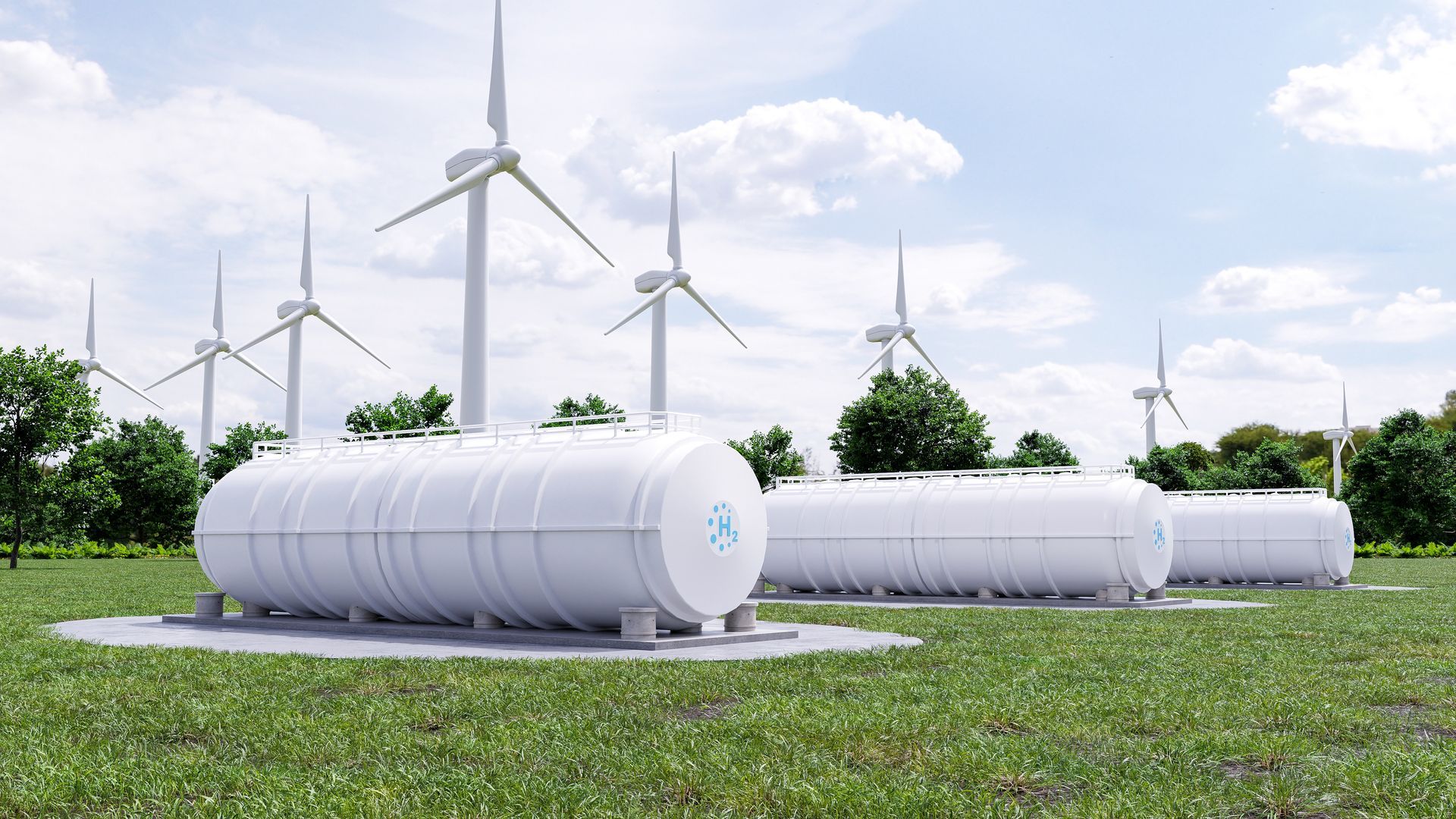1MG FlippingBooks
Australia: A Hydrogen Leader
By Kate Vidgen
Though the path ahead is littered with obstacles, Australia has an opportunity to alchemise hydrogen’s flexibility as an energy vector into cleaner living and export gold.

As the world tackles the challenge of decarbonisation, Australia is uniquely placed to become a global clean-energy leader. With an abundance of natural resources such as wind and sunshine, we already have a mature investment market for core forms of renewable energy.
Then there are technologies, such as green hydrogen, which are, by international standards, emerging. With its heritage in mining, proximity to off-takers in South Korea and Japan, and aforementioned resource abundance, Australia is perhaps uniquely placed to support domestic and export hydrogen markets. The Australian Government has recognised this opportunity, with a national strategy that envisages becoming a top three exporter to Asian markets.
Hydrogen’s flexibility as an energy vector is key. It can be a source of transport fuel, not only for point-to-point vehicles such as heavy haulage, rail and bus fleets but also, long-term, for hard-to-abate sectors such as aviation and shipping. Delivered through existing gas networks, it can also be used as a source of heat and a chemical feedstock. Crucially, hydrogen technologies, including electrolysers and stationary fuel cell applications, can also potentially contribute to grid stability by participating in demand response and ancillary services markets.
The fact that hydrogen is the most abundant element on Earth, used in many different industrial processes, raises the question of why the green-hydrogen industry remains nascent.
Green hydrogen is produced by splitting hydrogen from water using a renewable energy-powered electrolyser – a potentially zero-emissions process. Though electrolysers are scalable, there are a number of fundamental challenges impeding large-scale investment.
The first of these is the lack of immediate demand. Australia’s National Hydrogen Strategy projects meaningful, exponential growth in demand for hydrogen from about 2035, challenging equity investors and financiers to adopt a “build it and they will come” approach.
Just so, new markets generally require support to create momentum – in this case, government participation through offtake agreements. Given there are at least seven industrialised nations with hydrogen strategies, it is a competitive landscape. There is, however, a successful Australian precedent to reference: government support underpinned the development of Western Australia’s LNG market (notably the North West Shelf) via domestic demand, providing confidence in the formative stages of export market development.
The nature of the offtakes is also a potential challenge. In new industries, infrastructure is generally underwritten by long-term offtakes to enable amortisation of infrastructure capital – initially 20 years, in the case of LNG, before a more mature market formed. Hydrogen is different, and its usage has an impact. For example, vehicle fleets typically have a relatively short life of seven to 10 years, creating significant residual value risk. Governments may have a role to play in bridging different investment horizons between supply and demand.
Finally, there are concerns about the safe usage of hydrogen. While hydrogen has been in usage for more than a century, its wide flammability range and low ignition temperature create the perception of risk. Some very positive work has been done on risk management and standards, but it will be important that training for newer applications is developed in line with specialist expertise.
These challenges will require public and private sectors to work together to drive the maturation of this nascent industry. And while the challenges are fundamental, many countries are undeterred and investor confidence in the long-term opportunity is shaped by the global trend to decarbonisation, accelerated by the need for activity to drive a post-COVID-19 economic recovery.
COVID-19 has also prompted many countries to review their approaches to sovereign capabilities, including energy security and independence. For Australia, domestically produced hydrogen can replace imported diesel in crucial industries such as mining, forestry and agriculture. This would have the added benefit of supply chain decarbonisation for our existing exports, something that buyers of Australian products will increasingly scrutinise. Hydrogen has the potential to generate significant carbon offsets, particularly as all sectors seek to reduce carbon intensity, ultimately bringing decarbonisation targets closer within reach.
For Australia, green hydrogen hubs may be the key to leveraging existing strengths to realise leadership potential in the nearer term. Utilising domestic demand to create expertise and scale could be the foundation for future export capability. Australia’s heavy industries are already supported by extensive infrastructure that can be further developed to support green hydrogen production and use.
An example is the Australian Renewable Energy Hub (AREH). Strategically located in Western Australia’s Pilbara region, the development is expected to have a total capacity of 26GW from onsite wind and solar to produce green hydrogen and green ammonia, as well as supply low-cost renewable energy to support Pilbara mining and mineral processing operations. The project has the potential to catalyse transformational development across the Pilbara by lowering energy costs and greening supply chains.
While AREH is expected to become operational in 2027, it can provide a model for other hub projects that could come online sooner.
Kate Vidgen is an executive director at Macquarie Group, the global head of Oil and Gas Principal for Macquarie Capital.










